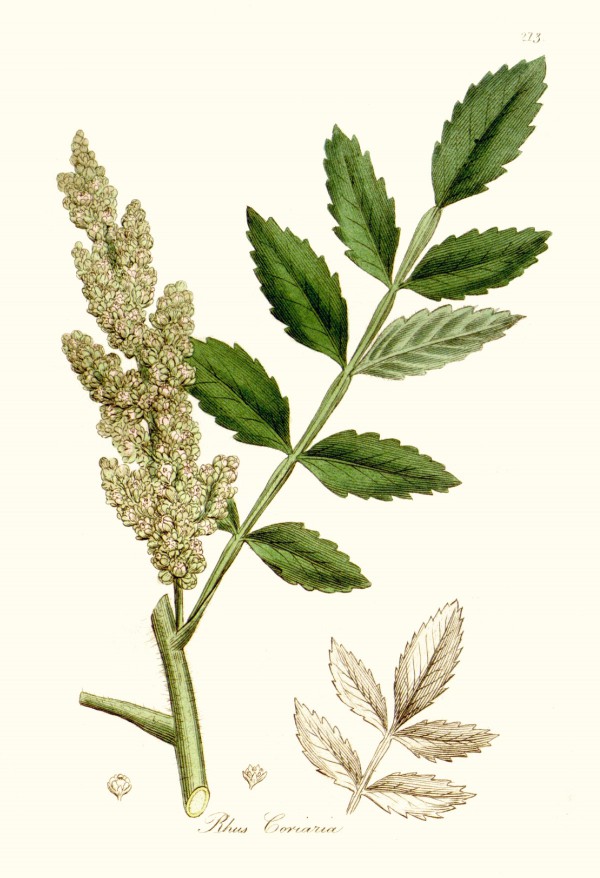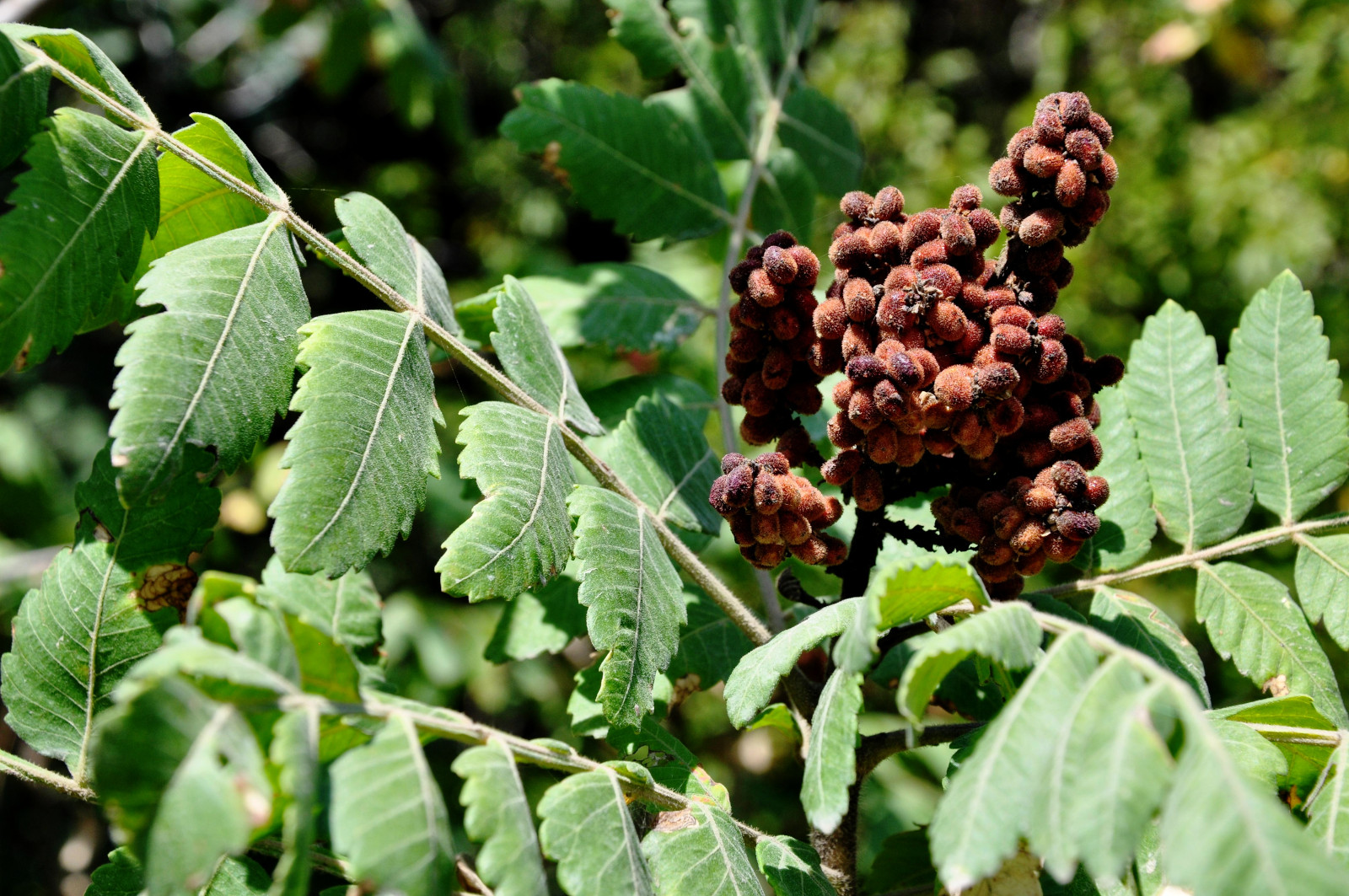Rhus coriaria L. - Anacardiaceae - Sicilian sumac, tanner's sumac, Gerber-Sumach
Deciduous shrub to small tree, native to Southern Europe, Western Asia, also cultivated; leaves alternate, pinnate; flowers greenish; fruits red.
„The dried fruits are used as a spice, particularly in combination with other spices in the mixture called Za'atar.“
https://en.wikipedia.org/wiki/Rhus_coriaria
The dried fruits are usually sold ground (purple-reddish powder, often mixed with salt) and have a tart and sour taste with slightly astringent overtones.
„The astringent-acidic flavour of sumac spice mostly goes back to two different types of constituents: Tannines (gallotannines, together 4%) and organic acids (malic, citric, and tatric acid plus smaller amounts of succinic, maleic, fumaric and ascorbic acid). Tannines are found in all parts of the plant, with particularly high concentrations in bark and root. These plant parts were, thus, used for tanning leather since antiquity; moreover, they are part of anti-diarrhoeic concoctions in folk medicine… “
http://gernot-katzers-spice-pages.com/engl/Rhus_cor.html
The predominant compounds of the essential oil obtained from the fruit pericarp by hydrodistillation were (Z)-2-decenal (9.9-42.3%), nonanal (10.7-13.0%) and limonene (0.1-9.4%).
[The essential oils of Rhus coriaria L.(Sumac)., Kurucu, S., Koyuncu, M., Güvenç, A., Baser, K.H.C., Özek, T., Journal of Essential Oil Research, 5(5), 1993, 481-486]
„The steam volatile constituents of the oriental spice sumac, the dry fruits of Rhus coriaria L., were analysed by GC and GC-MS. During comparative studies with plant material from six Turkish provinces, more than 120 substances could be identified. Main constituents are terpene hydrocarbons (i.e. α-pinene, β-caryophyllene and cembrene), oxygenated terpenes (i.e. α-terpineol, carvacrol and β-caryophyllene alcohol) as well as farnesyl acetone, hexahydrofarnesylacetone and aliphatic aldehydes.“
[The essential oil of Rhus coriaria L. fruits., Brunke, E. J., Hammerschmidt, F. J., Schmaus, G., Akgül, A., Flavour and fragrance journal, 8(4), 1993, 209-214]
„The flavour characteristics of sumach (Rhus coriaria L.) from the southeastern region of Turkey were investigated by using GC/MS and sensory flavour profile analysis techniques…
Malic acid was detected to be responsible for the sour taste of sumach. β-caryophyllene (spicy, woody), cembrene (woody) and caryophyllene oxide (spicy)… seem to have an important contribution to sumach flavour. Sensory flavour profile analysis revealed oil and acid aroma and dried lemon balm, cellulose/woody, spicy, earthy and astringent flavour characters as common descriptors…“
[Flavour characterization of sumach (Rhus coriaria L.) by means of GC/MS and sensory flavour profile analysis techniques., Bahar, B., Altug, T., International Journal of Food Properties, 12(2), 2009, 379-387]

Woodville, W., Hooker, W.J., Spratt, G., Medical Botany, 3th edition, vol.4 t.213 (1832)
http://plantgenera.org/species.php?id_species=878592

Ripe fruits of Rhus coriaria, spotted in Shio-mgvime, Georgia. (2012)
Wikimedia Commons, Author: Lazaregagnidze CC BY-SA 3.0
